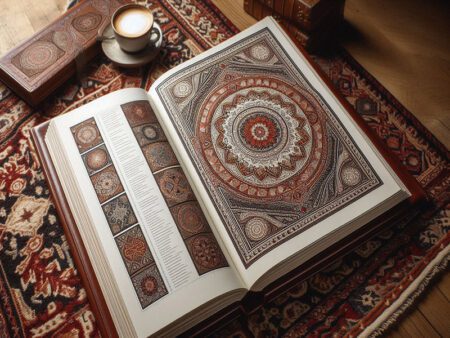
VERNA CARPET – Redesign by Parsineweb





Showing 1–20 of 25 results
The kilim is a flat woven textile without pile, which is produced by intertwining the warp and weft. The weavers first prepare the loom and install the vertical strings of the warp on the loom. Then the horizontal strings of the weft are passed through the warps and the weft is pulled down, and this way the pattern of the kilim appears. The weft strings are always woolen, but the warp strings are made of wool or cotton. In thinner kilims, kork wefts are used.
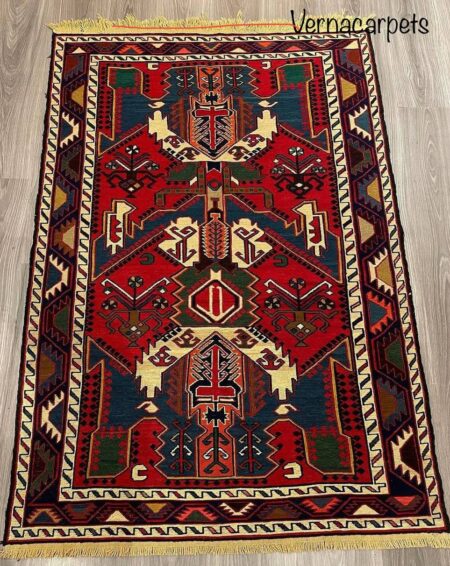
Ardabil Kilim
The history of kilim weaving is said to be 3000 years before Christ, which is the beginning of textile. After building houses, early humans looked for a place to sit and create more comfort. They made mats from plants like reeds, but these mats became dry and hard after a while and were not soft enough. Finally, in the same way and with the wool fibers obtained from hunting animals, they started weaving flat textiles and kilims were created. The kilim that is woven from wool is very strong and is an excellent insulator against heat, cold, snow and rain.
A kilim or kelim (Persian: gilim; Turkish: kilim) in carpet encyclopedia is a flat-woven wool carpet or rug without pile. Another name for kilim is plas or palas . The most famous of them are woven by nomads.
The kilim has its roots in ancient Iran. Since thousands of years ago, flat woven fabrics without piles were woven between the tribes of Shahsevan, Azerbaijan and Qashqai, which included kilim, sofre, khorjin, salt bags and jajim. The rugs were not very soft but very durable. They were lighter and faster to weave.
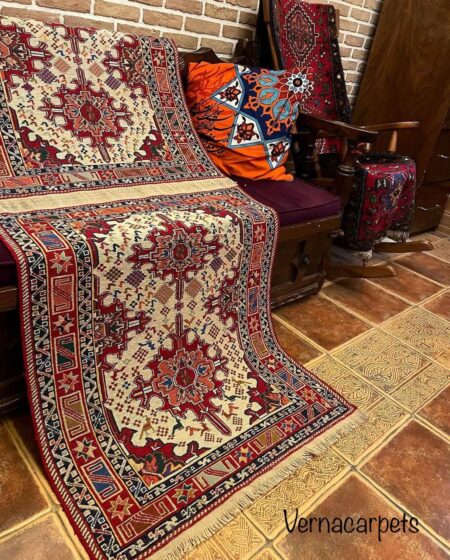
Tabriz Kilim
These kilims are woven in a simple style and have only warps and wefts. The wefts pass through the warps one by one and create the map of the kilim. Both sides of these kilims can be used.
The texture of these kilims is similar to carpets but without pile. The weft is wrapped around both warps and then the thin weft is passed through and a verni is obtained. The verni kilim is similar to soumak and is mostly woven in the Ardabil and Arsbaran regions by Moghan nomads. Like other kilims, the verni is made using mental designs and without pre-designed patterns. This kilim is one-sided.
This type of kilim is mostly woven in Sirjan. In this kilim, the weft does not play a role in the texture and connects the warps to each other and makes them stronger. This kilim has piles like a carpet, they are tied using a pattern on the rug and at the end, the extra piles are removed.
Kilims are woven in many regions of Iran, the most important of which are Qashqai, Fars, Turkmen, Shahsevan, Balouch, Khamse, Anbaran and Sirjan. You can see some of kilims on vernacarpet
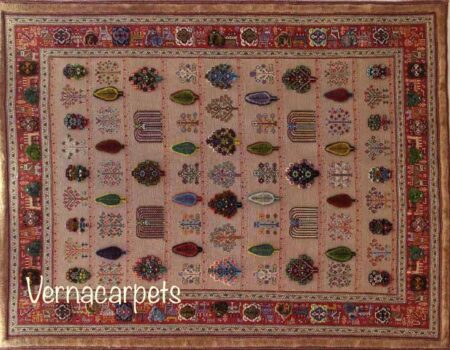
Sirjan Kilim
Nomads produced kilims for useful purposes. They used kilims as underlays, tent decorations, blankets, baby cradles, horse saddles, and bags for storing food (salt, wheat, barley).
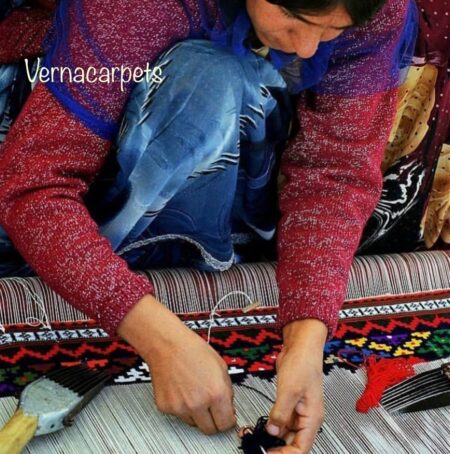
Weaving A Kilim
Natural materials are used for dyeing the kilim. Usually dyeing materials are prepared from plant sources. Sometimes the kilim is washed with tea and walnut skin to make it look old. Therefore, kilims are completely made from organic materials and are beneficial for health.
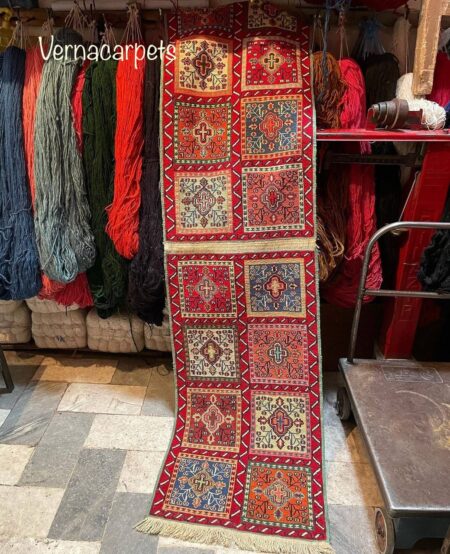
Tabriz kilim
First, you should sweep both sides of the kilim so that no dirt remains on it, then spread that on a clean surface and wet it completely. Prepare a solution of carpet shampoo, warm water and white vinegar and mix them well. White vinegar prevents kilims from lightening during washing. Dip a very soft brush in the solution and start washing from one corner and clean all areas well in successive movements. Repeat this for the other side of the kilim. Remember that you should never use firm movements; Because it damages the texture of the kilim. After finishing, wash the kilim completely with cold water so that no detergent remains in it. Then place the kilim horizontally and flat. It sometimes takes 24 hours for the kilim to dry completely so that the moisture is completely removed. Washing the kilim in the washing machine is not recommended at all; Because it destroys its texture.
1- Avoid placing heavy items on the kilim because it will crush that. Change the place of these items every once in a while.
2- Vacuum once a week with medium suction, but don’t vacuum the edge of the kilim because it will tear.
3- Avoid placing the kilim in front of the sun for a long time. Use curtains for windows
4- Do not put the kilim in a wet place because it causes it to rot.
Rugs and kilims are made from natural materials such as wool, silk, cotton and natural dyes. In addition, these kilims are the result of the efforts of skilled tribal weavers, so they have a very high value. On the other hand, these rugs have become very popular in modern decoration today. At vernacarpets You can buy these valuable handcrafts with good quality and reasonable price!
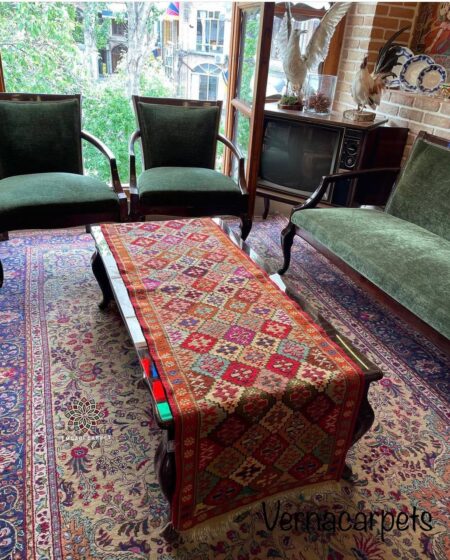
Moghan Kilim In Home Decoration